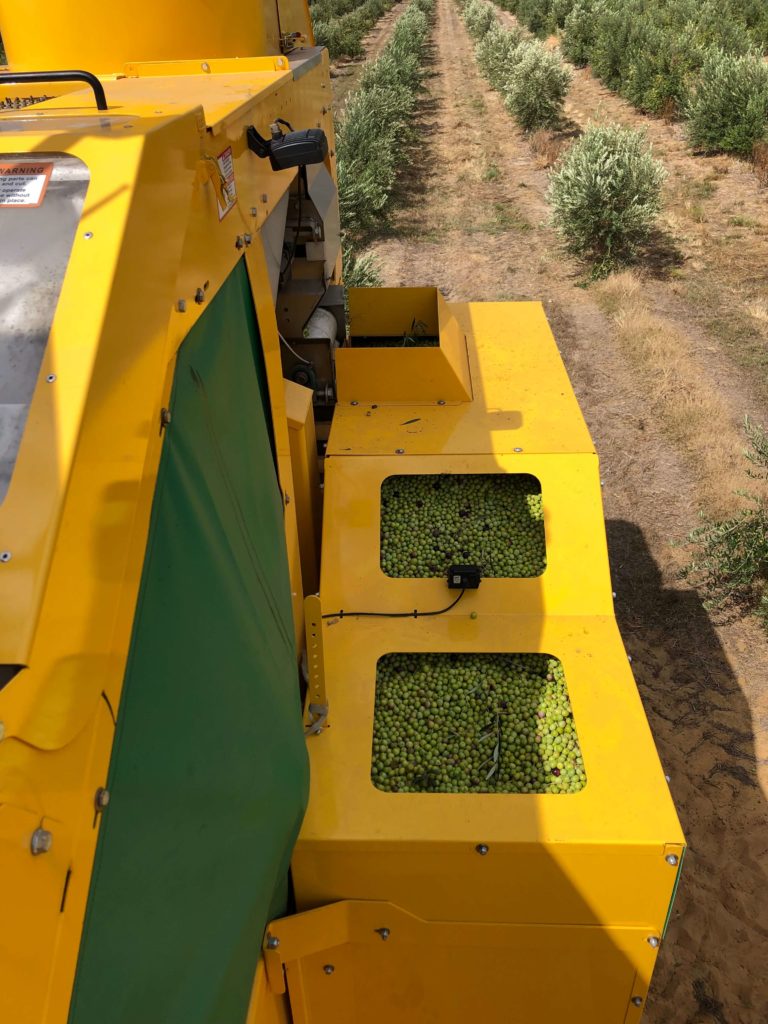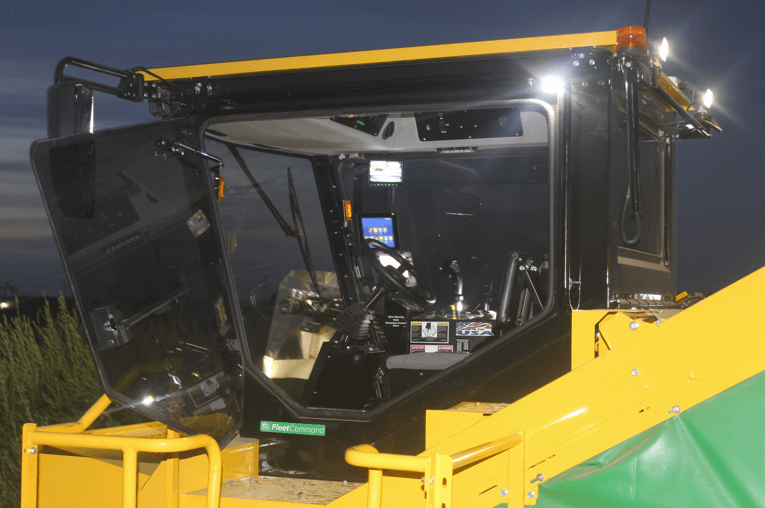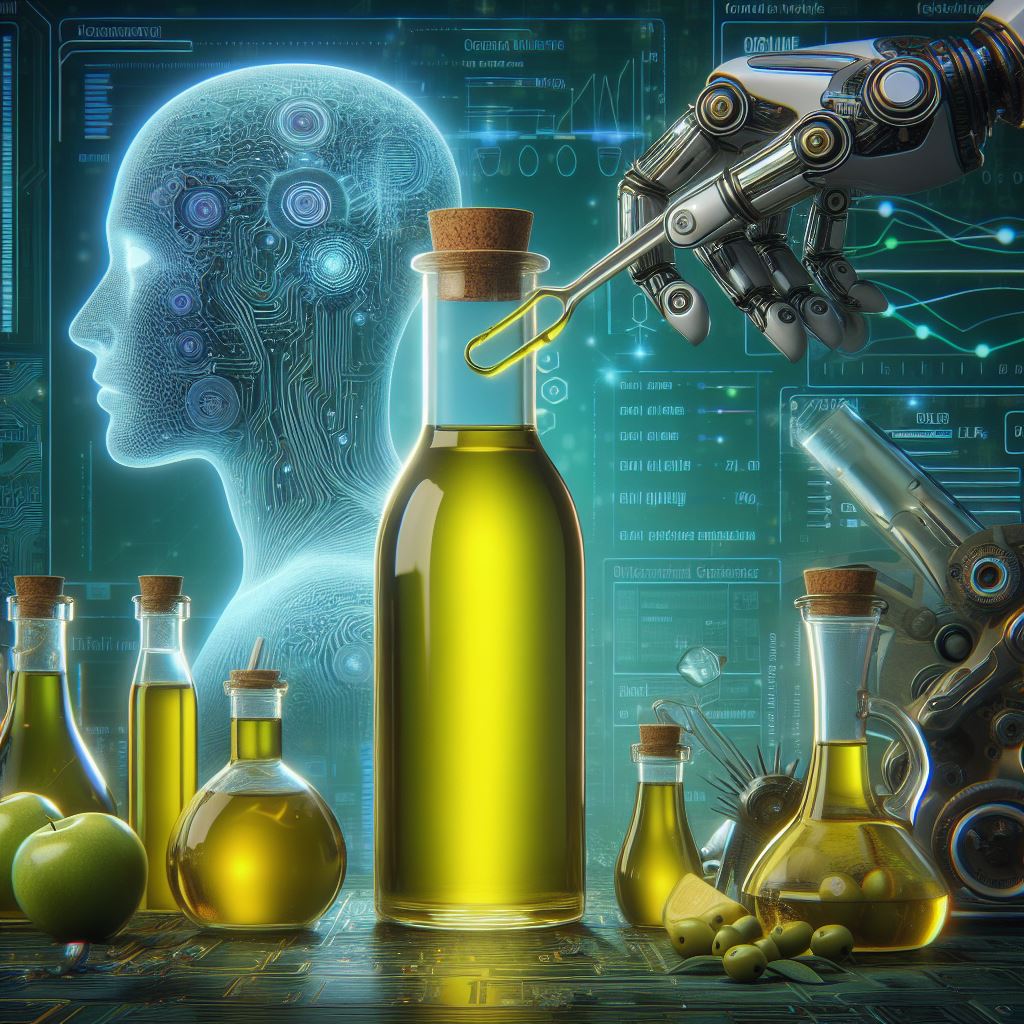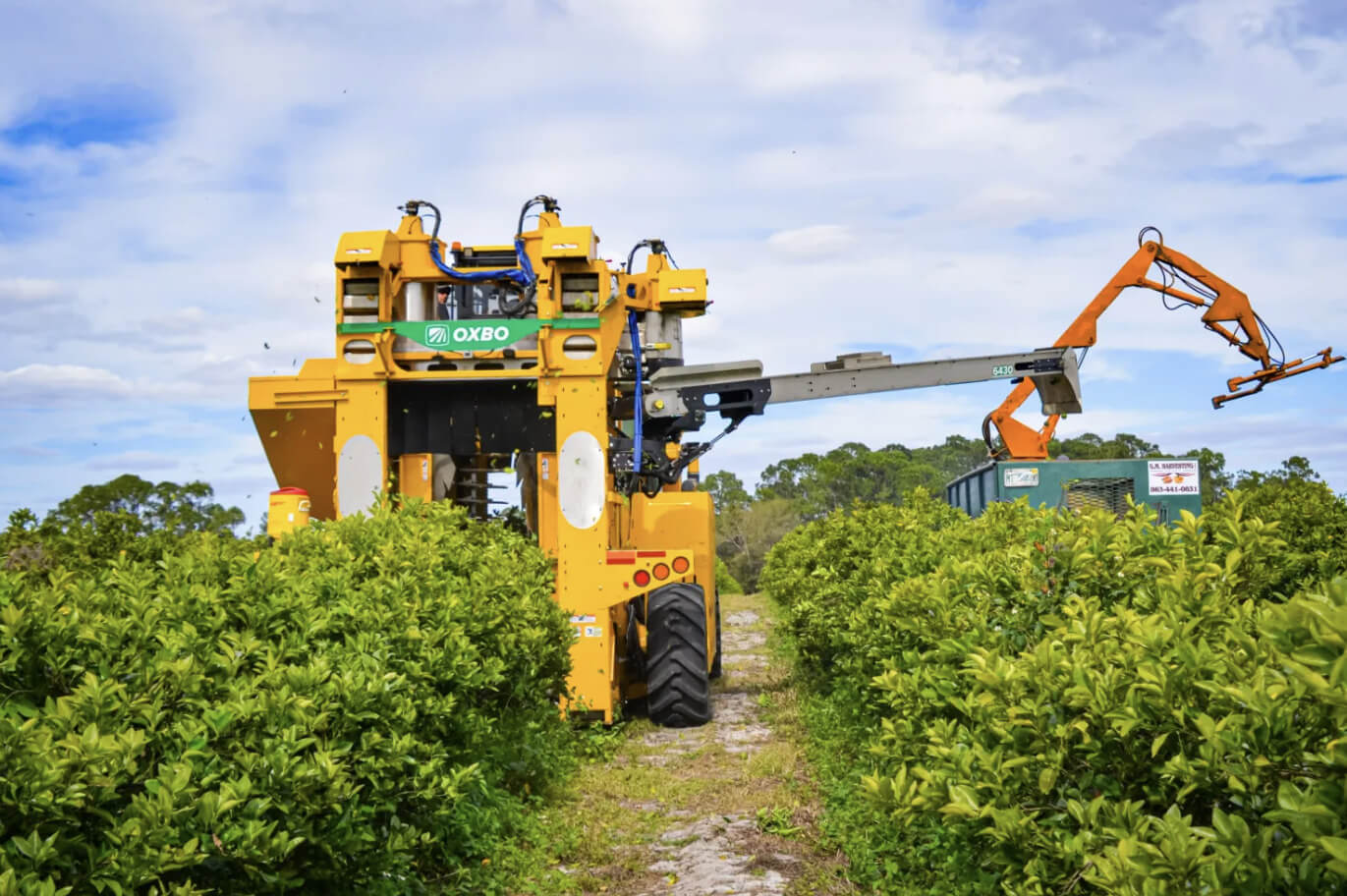We know agriculture will continue to change and evolve; as an equipment developer and manufacturer, we spend time in the field and with customers working on solutions to support the future state of agriculture.
We believe that by 2041 there will be fewer people in global orchards hand harvesting crops; we do not believe we will see ladders in general agriculture fields in 2041. We do believe many people will continue to be needed in the agricultural space, but that the needs and tasks will continue to change. In general, we think in two decades there will be fewer people hand harvesting specialty crops and therefore the various industries will turn to mechanization and mechanical harvesting methods.
We project that the super high density (SHD) formats will continue to see growth in their current crops but also expansion into new crop types over the next two decades.

Both the production per acre and the accessibility to harvest the crop from the ground should continue to drive this trend toward SHD formats and orchards.
In the next two decades, we expect to see more automation, some level of robotics in the field, increased productivity (both of equipment and production per acre), as well as technology that increases product knowledge, product traceability, end product safety and continued reduction in environmental impact.
We believe that as technology continues to improve we will see more “smart” equipment—equipment that adjusts settings based on the performance, conditions or product quality. We also believe there will be an increased presence of autonomous and semi-autonomous vehicles, harvesters and platforms in agriculture. Further, we predict that mechanization will become more affordable, and therefore more prevalent, for challenging, manually harvested crops and manual crop processes.
We predict a continuation of the current trend to expand training programs for employees as current and future agricultural employees utilize and manage equipment. We expect a continued focus on food safety, food quality, employee safety and sustainability of resources. We hope to see collaboration within crop segments and between crop segments as the agricultural markets work together to feed the world.

With these thoughts in mind, Oxbo continues to talk with growers and customers to prototype and develop solutions that will be needed in the future.
We listen to our customers and use their feedback and requirements to expand our products to better meet their changing needs.
Currently, we make our technologies easy to use and robust for field applications, but we also focus on easy diagnostic screens and easy-to-understand error and safety messages as well as easy-to-adjust controls. We tailor the development of new technologies to help our customers drive additional revenue in their operations. We understand that uptime, crop retention, crop quality, and crop removal are keys to customer profitability; therefore, we focus our efforts on technology that supports our customers in these areas. We also design our equipment to be customized—not every region, field, and customer is the same!
As a company we are focused on sustainability

We have initiatives across the globe to improve our sustainability, both in our operations and manufacturing activities but also in our equipment design. Our equipment is designed with ECOMode, which has been proven to reduce fuel consumption by up to 40%. As an industry, SHD crops lend themselves well to sustainability initiatives. For instance, in almonds, dust reduction and food safety are improved when almonds are harvested using shake and catch methods.
SHD plantings also tend to use fewer inputs while producing more tonnage per acre than conventional plantings. With these goals in mind, Oxbo design its harvester with the widest picking tunnel to allow our customers to prune their SHD hedges wider which in turn allow the tree to produce higher volumes of crop per acre—this can increase sustainability efforts as well as contribute to efficiency goals. Our shaking head design reduces product lost in front of and behind the harvester. For harvest efficiency in long rows with high tonnage crops, Oxbo harvesters utilize an over-the-row conveyor.
In some crops, the conveyor and a recycle bin can deliver continuous production—no stopping to unload and no waiting for a tractor with an empty container. We continue development in our harvesters to increase harvest efficiency—thoroughly removing crop without tree damage—but also to increase product quality. Delivering a clean product can drive down stream efficiencies for our customers (such and increased throughput in the mill operation). Growers can continue to look to Oxbo for additional product development in these areas.
YieldTracker system
Data will continue to drive agriculture and decision making in agriculture. Already, Oxbo offers several solutions to increase useable, actionable data in the orchard. For several years, Oxbo has offered the unique YieldTracker system. This system allows customers to create variable yield maps of the orchard while harvesting; data can be shared real-time through cloud storage but also utilized in depth through the robust SMS software program or exported to an agriculture service provider (AgLeader product).
Combined with soil, water, and application data, yield data can drive actionable decisions in the industry and can be used to adjust farming practices. Utilizing the AgLeader platform, Oxbo YieldTracker can be used across equipment operating in the same field. Oxbo is working with customers to prototype new solutions designed to collect other quality and crop metrics from the fruit or nut stream. Growers can expect to see these new solutions in the near term.
FleetCommand system
Oxbo also offers the FleetCommand system which allows for easy fleet management. Current equipment settings, location, performance and efficiency data, and customizable reports are available in a simple user interface available on a phone, tablet, or computer. The system makes it easy for a manager to see performance and settings across a fleet of harvesters and even troubleshoot simple errors remotely—error codes and messages can also assist in remote service assistance. Additionally, the system provides turn-by-turn directions to find equipment in the field.

Moving forward, data will be increasingly important to growers and vertically integrated organizations. As the harvester is the first pieces of equipment to handle the final product, harvesters are in a unique position to help customers address traceability and food safety though data that can and will be collected on-board. As stated, technology like FleetCommand can provide equipment efficiency, fuel usage and up time which can be managed remotely and used to increase productivity in the orchard. Additionally, this data set can be used season after season to understand performance trends and improvement. In the future, we continue to work on providing customers with additional product quality data that can be layered with yield data or used to make harvesting and farming decisions.
Oxbo remains excited about the future of agriculture and specifically excited about the future of specialty crops. Our team continues to push development in the areas that promise to add the most value to our customer base.
Kathryn Van Weerdhuizen
Global Market Manager, Fruit







